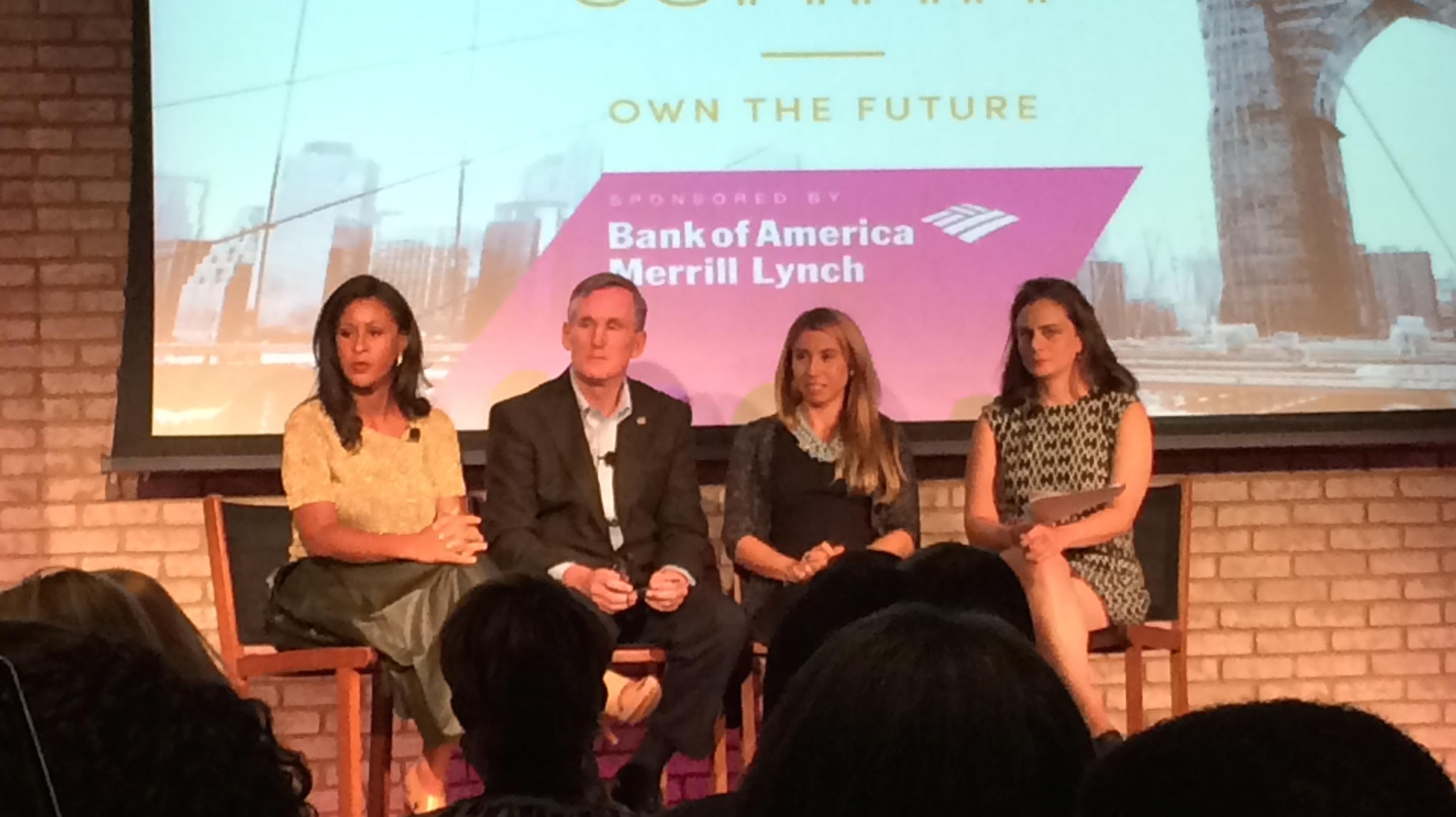From: http://www.bizjournals.com/
For many startup founders, raising money is the key to continued success. But as most entrepreneurs will attest, it’s a messy process.
That’s why Inc. magazine recruited a star-studded panel of founders for its annual Women’s Summit who had been there and done that. Rent the Runwayco-founder Jennifer Fleiss has helped raise $54 million for her company. Angela Benton, founder and CEO of NewME, an accelerator program for minority and female entrepreneurs, has helped more than 300 startups raise more than $17 million. And Brian Hamilton, co-founder and chairman of Sageworks, a financial information firm that analyzes private companies, focuses on boosting other entrepreneurs’ financial literacy.
Here are 5 of the best tips they offered:
1. Have a minimum-viable product before trying to raise money.
You need more than a great idea to pitch to investors, said Angela Benton, founder and CEO of NewME, an accelerator program for minority and female entrepreneurs.
You should have a minimum-viable product, customers or some form of proof that your business is credible.
“A minimum-viable product is not a beautiful, fleshed-out product,” Benton said. “They’re usually rough and dirty, but they’re necessary to validate your idea and business model.”
Hamilton of Sageworks agreed: You need to demonstrate how everything is moving along, he said.
2. Build a body of proof for your business.
Rent the Runway co-founder Fleiss and her business partner, Jennifer Hyman, met and launched their business at Harvard Business School with a goal: Offer a solution to the age-old problem of having a closet full of clothes but nothing to wear by letting women rent designer clothes for 15 percent of the retail cost.
To date, the pair has raised $54 million over four rounds of venture funding. But how did they convince a room full of 60-year-old male venture capitalists to give them millions of dollars to help women who already have a lot of dresses?
Well, before launching into value propositions and business models, Fleiss said they showed the investors the customers, the emotions a designer piece of clothing can evoke.
To do that, they set up pop-up shops with designer wares on campus and videotaped students who were excited about renting. They invited the investors to visit the pop-ups and showed them what customers were saying.
3. Think about the end before you get started — and hire a lawyer when you do:
It sounds counter-intuitive, but you need escape hatches when you launch a business, the panelists said. What if you and your co-founder decide to split ways? What if you’re burned out and want to do something else? Begin working with an attorney early on and draw up those documents now, Fleiss said.
Hamilton agreed, speaking from experience. One of his two co-founders wanted out — and also owned 23 percent of the company. The founders didn’t have an exit plan in place.
“We went to a lawyer, and there was no real agreement there,” he said. And buying out the co-founder meant they’d need to spend a lot of money when the company didn’t have any money, he said.
Another reason to hire an attorney early on: Fleiss said theirs acted almost like a sports agent.
“Venture capital lawyers are in touch with (VCs) all the time,” she said. “If you find someone who believes in your business, they’re a very credible person to vouch for you.”
3. Don’t raise money when you’re desperate for money.
When raising your first round of funding, get detailed about how much money you’ll need to operate. Then make sure you have about 15 to 18 months of business expenses in funding, Fleiss said. And don’t wait too long to start raising your next round.
“What you don’t want to do is raise money when you really need money,” Fleiss said. “Leave a cushion in there.”
Because if you get down to three months worth of cash, you’re going to end up making rash financial decisions and will likely give more of your company away than you should, Fleiss said.
5. Once you get the funding, start growing — just not faster than you can manage.
Once you get that big influx of cash, it’s easy to “overspend and lose control,” Hamilton said. But it’s important not to grow too fast.
One way Fleiss did this at Rent the Runway was to adopt a wait list. The company bought the batch of items they could afford at the time and maintained the maximum number of customers those clothes could accommodate.
Everyone else went on a wait list, and once they had more funding and could buy more clothes, they served the women on the wait list.
The effect was two-fold: First, they didn’t expand faster than they could handle. Second, the wait list served as yet another measure of the demand for their company. They were able to use the list as justification for seeking more funding.
Even now, with more than $54 million in venture funding and more than a million members, they still follow that guide.
“We just launched a beta product around accessories and have a huge wait list,” Fleiss said. First, “we want to put great elements of customer service into place.”








Leave a Reply
You must be logged in to post a comment.